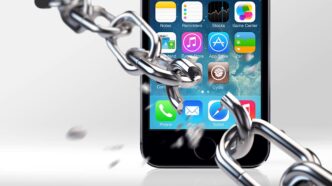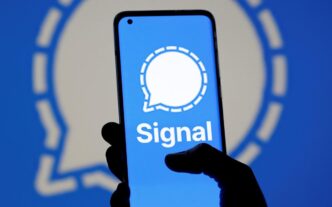While mobile phone jailbreaks might seem harmless to users seeking customization, they’re quietly becoming a major cybersecurity nightmare for businesses. New data reveals that jailbroken or rooted phones expose users — and the companies they connect to — to exponentially higher risks of malware infections and full system compromise.
The growing threat was highlighted in a report by mobile security firm Zimperium, which found that cracked devices — both Android and iPhone — are up to 250 times more likely to be fully compromised compared to standard, intact phones.
For companies already grappling with BYOD (Bring Your Own Device) security risks, the issue gets worse when personal phones connecting to corporate networks are jailbroken. Zimperium’s data showed that more than 70% of infected devices are personal phones, which often serve as a digital Trojan horse — carrying malware into corporate environments through unsecured backdoors.
According to Kern Smith, Zimperium’s Vice President of Global Solutions Engineering, the frequency of mobile phone jailbreaks may have slightly dipped, but the danger they pose has escalated. “These devices now face a significantly higher risk profile,” he warns. “Combine that with the general rise in mobile threats, and it becomes a dangerous multiplier effect.”
At the heart of this growing problem is a simple desire: users want more control over their devices. Mobile operating systems like Android and iOS are built around strict sandboxing, limiting how apps interact and what users can tweak. For many, this isn’t enough.
“Some users want granular configurations that the default OS just doesn’t allow,” Smith explains. This craving for control fuels demand for powerful jailbreak tools that unlock deeper access — often at the cost of security.
Among Android users, Magisk stands out as the most popular tool. Known for its “systemless” rooting method, Magisk allows users to unlock their phones without breaking critical features like over-the-air updates or tripping Google’s security check, Play Integrity. Remarkably, Magisk has been forked hundreds of times monthly since its release in 2016, showing just how active the community remains.
For iPhones, the Checkra1n jailbreak tool is equally powerful — and far more difficult to counter. Instead of attacking iOS itself, Checkra1n exploits a hardware-level flaw (CVE-2019-8900) affecting the secure boot process of certain Apple devices. Because it targets the chipset, the vulnerability can’t be patched with regular software updates. “Checkra1n persists across iOS versions — it’s practically unfixable,” Smith notes.
While jailbroken devices make up only about 0.1% of all mobile phones worldwide, they’re far more common in Android (about 1 in 400 devices) than iPhones (around 1 in 2,500). Android’s flexibility plays a role here, with users able to flash devices or downgrade OS versions — freedoms Apple’s closed ecosystem doesn’t allow.
Interestingly, Zimperium’s data revealed that Vietnam, the U.S., and Malaysia are hotspots for jailbroken devices, though the reasons remain unclear.
The Alarming Threat that Mobile Phone Jailbreaks Pose to Businesses
The real problem starts when these jailbroken phones connect to corporate networks. Zimperium’s year-long study found that cracked devices were 3.5 times more likely to carry malware and hosted 12 times more compromised apps than secure devices.
The numbers are staggering: 33% of jailbroken devices were found infected with malware, and total system compromises were 250 times more frequent. Even worse, filesystem-level breaches happened 3,000 times more often on jailbroken phones.
Smith warns that many companies are operating under a dangerous false sense of security. “They assume this isn’t happening or believe their defenses will catch it,” he says. “But these jailbreaks are so sophisticated now, they often slip past detection tools unnoticed.”
With BYOD policies now standard, these hidden vulnerabilities mean a single compromised phone could infect an entire corporate network — leading to data breaches, financial loss, or worse.
“Organizations are likely exposed to far greater risk than they realize,” Smith adds. “And when jailbroken devices are involved, that risk skyrockets exponentially.”













